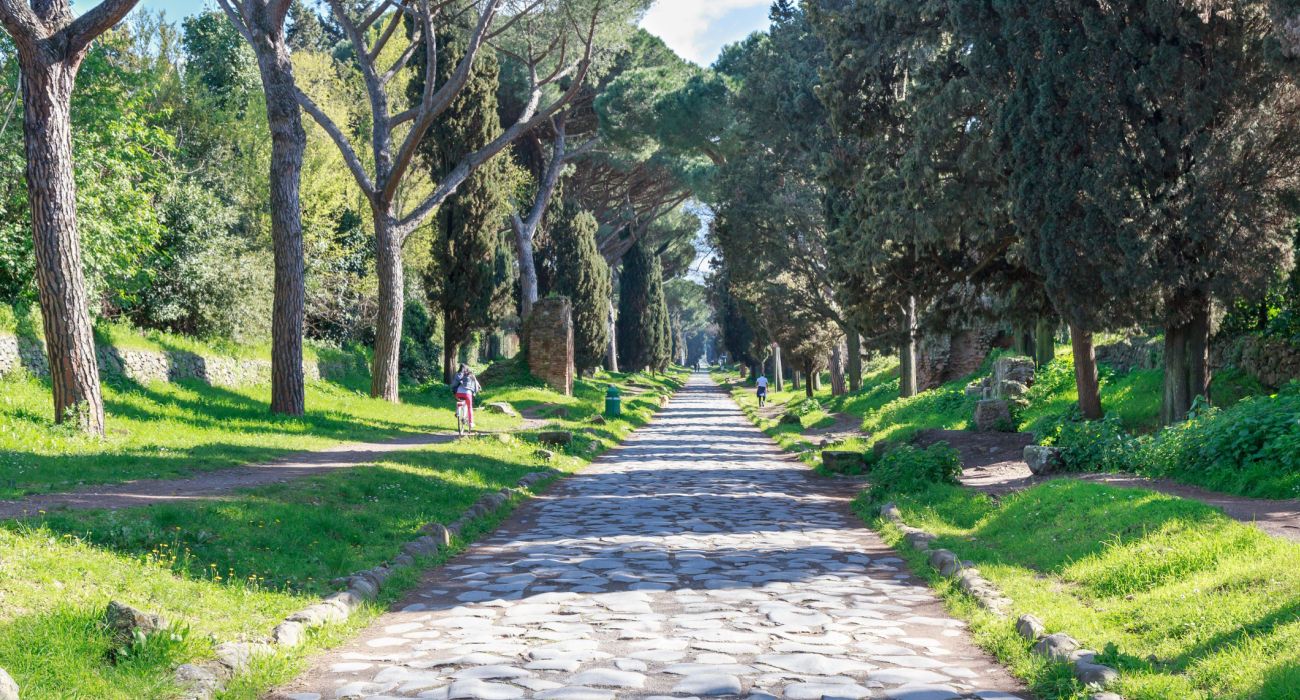Quick Links
The Romans were some of the best engineers of the ancient world. The Romans built some of the best road networks that the world saw up until somewhat modern times and many of the old Roman roads remain preserved today. Today even the famous Romantic Road of southern Germany follows old Roman roads (it explores many of the most famous attractions of the south of Germany). Perhaps the most famous Roman road is the Appian Way which visitors can still see today.
Go over to South America and see the Inca's built their own counterpart on the Roman roads. The Inca road network was considered the best in the pre-Columbian Western Hemisphere. Even the hiking trail to Machu Picchu follows old Inca roads and offers a timeless experience. But today, we explore the Roman road Appian Way.
Length & Route Of The Appian Way
The Appian Way (called Via Appia in Latin). It was one of the first and one of the most important of the early and strategic Roman roads.
It connected Rome with Brindisi in southeast Italy and dated from the early Roman Republic. It was the first of the long roads built by the Romans specifically to transport their armies.
From Brindisi, the route crossed the Adriatic Sea and connected with Greece, the East, and Egypt. Numerous military expeditions used this route.
In 189 BC the old pavement was replaced with large and polished basalt stones that were very durable and resistant to heavy traffic usage. It was wide enough to have traffic in both directions.
The importance of the Roman road is seen in its name Appia longarum... regina viarum or "the Appian Way, the queen of the long roads".
History Of Rome's First Long-Distance Road
The road was named after a Roman censor, Appius Claudis Caecus, who built the first section of the road as a military road during the Samnite Wars in 312 BC.
The road served an important role in the early Roman conquest of southern Italy and then in the passage of armies and running of the Republic and Empire for many hundreds of years thereafter.
- First: First Long Distance Roman Military Road
- Width: 4.10 meters
- Built: 312 BC
- Age: 2300 Years
The construction of the Appian Way heralded the beginning of the Romans as masters of road construction. It was the being of Romans building roads from Rome into their domains giving rise to the expression "All roads lead to Rome."
Any student of military history notes that "Amateurs talk about tactics, but professionals study logistics.” This was one of the fundamental reasons why the Romans were able to be so successful.
By building the Appian Way they were able to support and resupply their troops by getting past the Pontine Marshes and bypassing a tortuous coastal road.
One chilling event that took place along the Appian Way was the crucifixion of the defeated Spartacus and 6,000 slaves along the road in 71 BC. It has been immortalized in Hollywood movies and likely inspired the crucifixion of 163 Great Masters by Daenerys in the HBO TV series Game of Thrones.
The road endured but with the fall of the Western Roman Empire, the road fell out of use and degenerated.
Visiting The Appian Way Today
Today the Appian Way, called the Via Appia Antica, is a free tourist attraction and can be seen near Rome. Start the trip at the Visit Information Centre Via Appia Antica. Here visitors can get maps and information about the sights along the way.
The Appian Way has been extensively restored. The first 5 kilometers or 3 miles of it are still heavily used by motorized traffic in Rome and not really suitable for walking. But after the first three miles, the traffic is lighter, and it is easier to explore on foot or by bicycle.
There are numerous ancient Roman attractions along the road, these include the Church of the Domine Quo Vadis, Roman catacombs, the Baths of Caracalla, and many more. The road today should be regarded as an open-air museum.
Today the Appian Way still has the longest stretch of straight road in Europe extending 62 kilometers or 39 miles.
While in Rome, take the time to see another great ancient Roman attraction — the Mouth of Truth (or Bocca Della Verita in Italian).

